Featured in the Winter 2023 edition of Vanderbilt Radiology Society's alumni newsletter, The Reader.
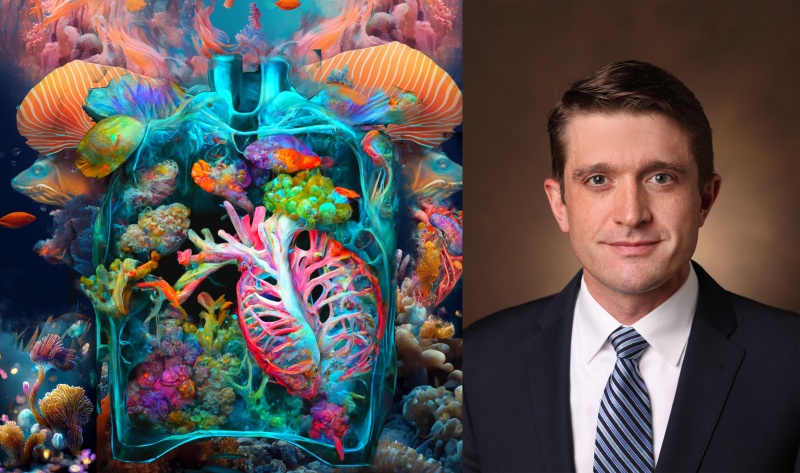
When many radiologists settle down for the night, they turn to classic comforts to help unwind after a long day: they stream a few episodes of their favorite show, read a book, or work on a crossword puzzle. Brent Savoie, MD, JD, says that his wife’s go-to relaxation ritual involves a game of Sudoku.
But Dr. Savoie’s nightly routine is a bit different. The Associate Professor and Vice Chair of Informatics often finds himself working away at one of his ever-evolving digital art pieces.
The works—radiology-inspired collages created through AI and digital art tools—often emerge as lavish dreamscapes wherein anatomical imagery is presented by an abstract swirl of color, geometric design and deep-sea ecosystems.
Lately, Dr. Savoie’s imagination has created a world that blends the intricacies of marine life and human form: neuroanatomy that looks like coral, the body reimagined as a jellyfish, or an “x-ray aquarium.”
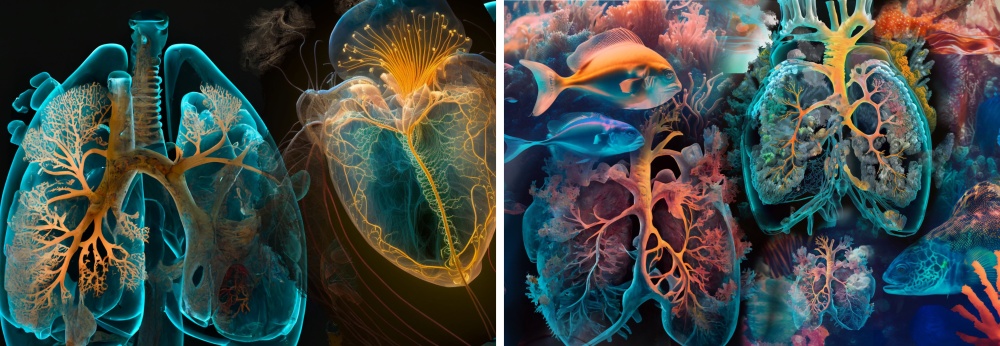
Through a sometimes repetitive—albeit exciting and unpredictable—process, Dr. Savoie produces art pieces rendered through a combination of mediums: his own photography, imagery created by artificial intelligence engines, and programs like Adobe Photoshop and Procreate. For some AI-induced works, like his underwater scenes, the work could undergo 10 renditions of algorithmic redesign. It can be quite an elaborate process to get to a semblance of a final product, but Dr. Savoie enjoys it even if he’s barely shared his work with the public.
“I kind of just do it for myself,” Dr. Savoie says with a laugh. “It's funny. I've always been a shy artist.”
Throughout his life, Dr. Savoie has maintained an interest in the arts, which has developed alongside his career in medicine. His passion first grew in high school, particularly while drawing, painting and creating multimedia pieces. Dr. Savoie’s talent showed so much promise that one of his teachers even suggested he pursue it in college. Daunted by the idea of taking art history classes, he opted to keep his passion as a hobby.
Once he began his education in medicine, Dr. Savoie became fascinated with the world of photography. Then, later as an intern and resident, he submerged himself in the world of digital art on his iPad.
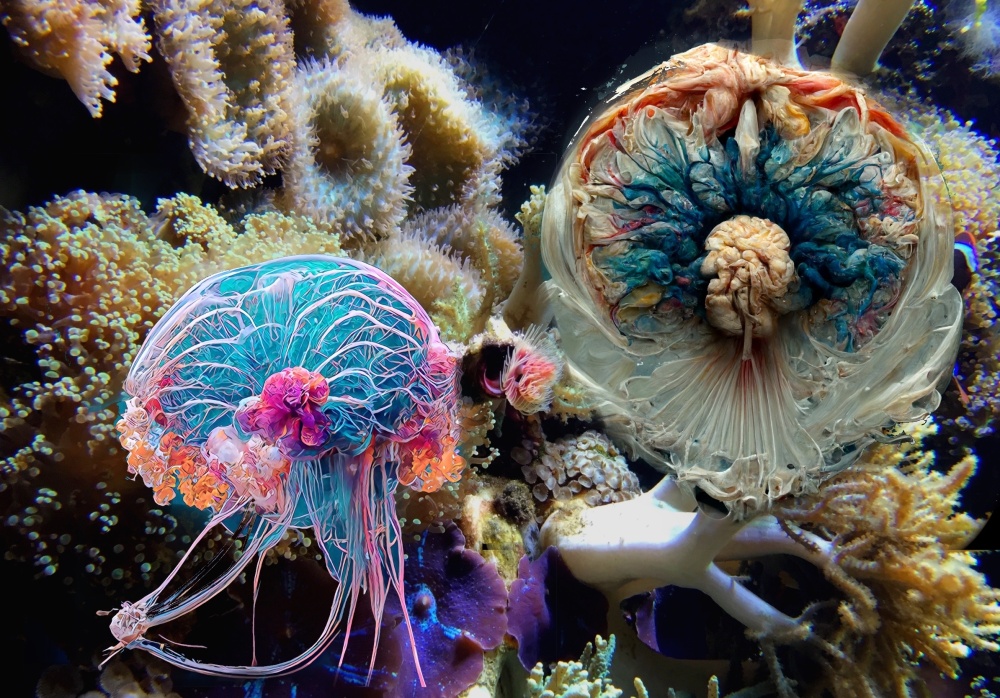
In the time since, his interest in visual elements and composition has evolved, integrating his photography with iconic public imagery and his own unique style, often translating as an intersection of silhouettes and color palettes with a hint of pop art.
Dr. Savoie frequently takes photos with the sole intention of repurposing them in his artwork. His mind is always considering the possibilities—and he’s snapped shots in the widest variety of places: while waiting for a ski lift, at the Ryman Auditorium, and even at cathedral ruins in Guatemala.
However, Dr. Savoie’s latest works fit into a new theme: portraying radiological imagery in unconventional circumstances, such as underwater or in the world of botany. It has proved to be a challenging yet rewarding task. His inspiration began in the reading room.
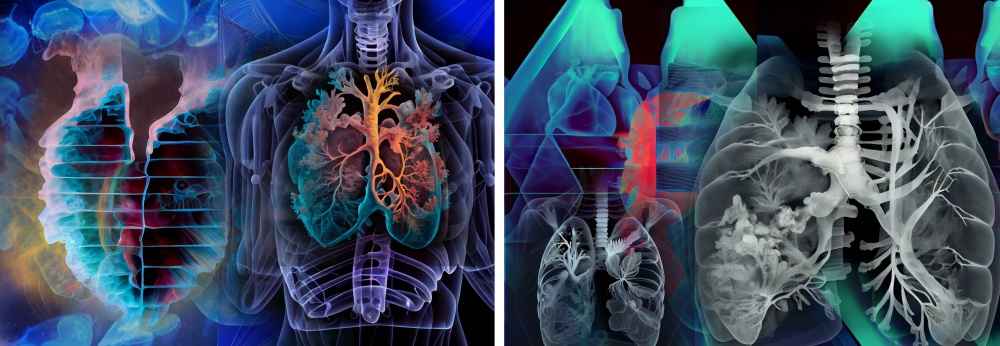
“You’re looking at these structures for so long,” Dr. Savoie explains. “Radiologists’ lives and work are highly visual, so I think there's a disproportionate number of people who have an interest in photography and art. I think for lots of people, the difficulty is in translating.”
Dr. Savoie says he has an artistic vision but has to navigate the limitations imposed on the artwork he wants to create. That’s where AI came into play. For example, when he decided that he wanted to integrate chest x-rays into artwork, Dr. Savoie knew he could not ethically use a patient’s scan. He was forced to use limited publicly available images for his art—until he realized that AI generators could provide a synthetic version, which he could then paint over and edit digitally.
“You can do some pretty cool things with it,” Dr. Savoie explains. “You create the image that is closest to what you want and then refine it until it’s the thing that you actually want. [AI] gives you this bridge between what you're thinking and the actual image. I take a lot of photos, but there's an endpoint to that. With this, yourimagination is your limit. You're not constrained by the fact that your hand might be a little shaky or you don't have the right brush.”
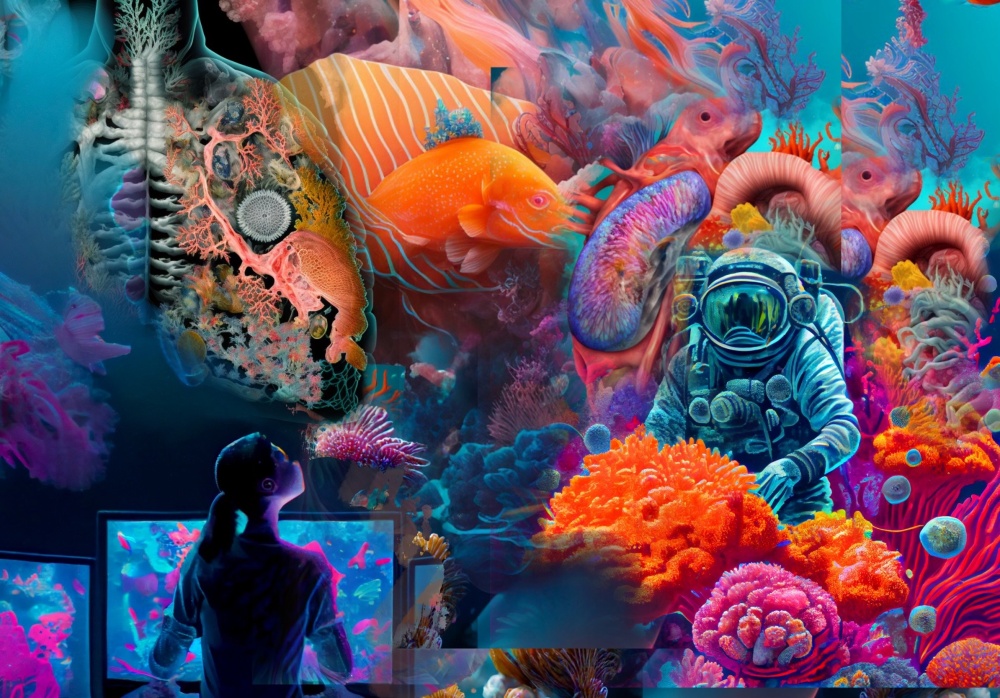
AI artwork has faced substantial criticism—some skeptics find it to be an insult to the notion of artistic expression: the argument that art should come from the mind and heart, not an algorithm. However, Dr. Savoie finds the technology to be one of many tools that brings his artistic vision to life. He emphasizes that AI is only a tool, not a replacement for artists themselves.
“People are saying AI is the end of art, right?” Dr. Savoie asks rhetorically. “There probably are some scenarios where if you're making a very generic something, then yes, it can make generic somethings. What it doesn't completely do is translate the artist’s vision into reality. But it's a good tool to help you get there.”
Ultimately, Dr. Savoie’s vision involves presenting the marvel and beauty of the human anatomy in a digestible and visually exciting way.
It’s a miracle how the body exists and functions. The ecosystem sustains life and even creates new life—which includes every experience and emotion that contributes to the human condition.
Medical imaging—while a lifeblood to every element of healthcare—can often be perceived as flat and stoic. American culture has embraced the skeleton as a symbol of fright–a morbid design reserved for graveyards and the spookiest of occasions.
Dr. Savoie’s artwork takes a tired perspective of the human anatomy and breathes life into it, showing the world what a radiologist sees when others may see some black and white bones. Each image represents the majestic nature of existence. No AI generator could purvey that sentiment without the spirit of a passionate radiologist.